Gurumelos, secrets and keys to finding Amanita ponderosa
7 years ago · Updated 6 months ago
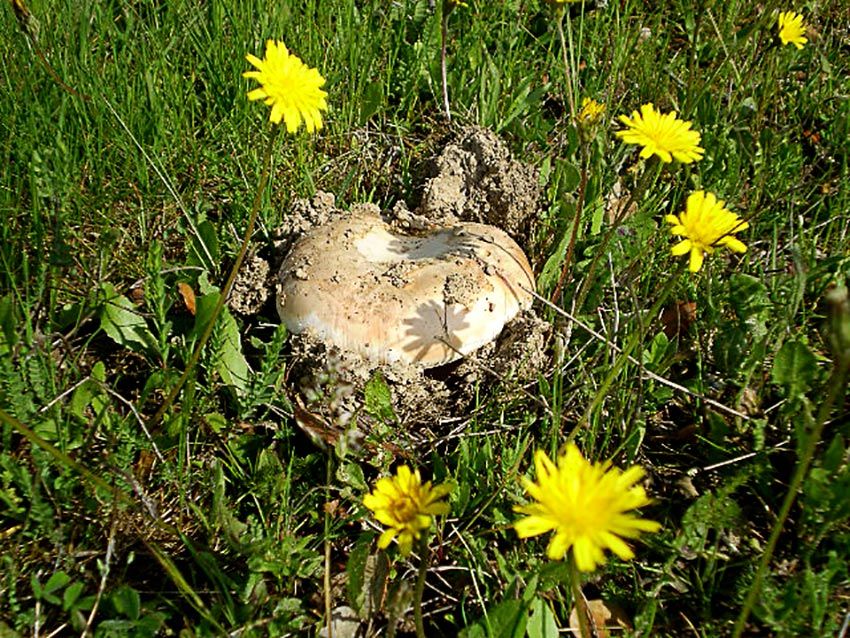
- Gurumelos are the first mushrooms of the year, Amanita ponderosa is their scientific name.
- Gurumelo, Amanita ponderosa
- How to recognize Gurumelos, Characteristics of A. ponderosa
- Where to look for gurumelo mushrooms?
- When should I look for gurumelos?
- How to look for gurumelos, Amanita ponderosa?
- Gurumelos in the kitchen
Gurumelos are the first mushrooms of the year, Amanita ponderosa is their scientific name.
This spectacular and delicious mushroom is an edible species that only appears in the southwest of the peninsula and in North Africa, appearing in late winter and early spring.
Gurumelo, Amanita ponderosa
Amanita Ponderosa is the scientific name for this basidiomycete mushroom. It is considered an excellent edible mushroom and is highly prized in areas that are lucky enough to have it. And there aren't many, as it is an endemic mushroom.
It can only be harvested in western and central Andalusia, mainly in Huelva, Seville, Cordoba, and Jaén, and in the southwestern part of the peninsula, Badajoz, and southern Portugal. Mushroom harvests have been reported in Toledo, Salamanca, and even Madrid.
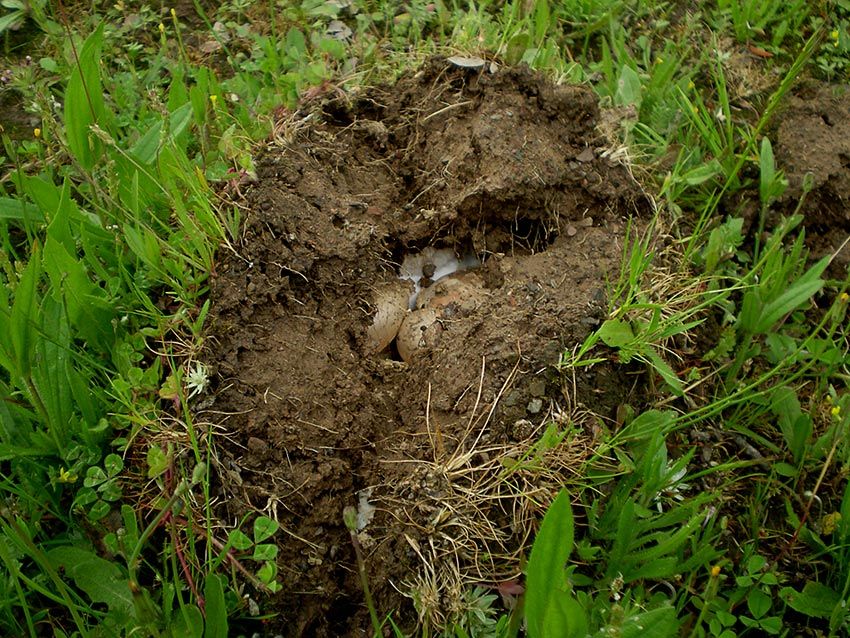
How to recognize Gurumelos, Characteristics of A. ponderosa
The Gurumelo (Amanita ponderosa) is a highly prized mushroom that is easy to recognize if you pay attention to its main characteristics:
- Cap:
- Hemispherical shape at first, becoming convex and finally flat in adult specimens.
- Diameter between 5 and 20 cm, although large specimens can exceed 1 kg in weight.
- White color that changes to pinkish or ochre tones with maturity.
- Gills:
- White in young specimens.
- Tend to become cream-colored as they mature.
- Free and tightly packed.
- Volva:
- Large, sack-shaped and persistent.
- It envelops the base of the stem and is very visible.
- Stem:
- Dense and compact in young specimens.
- Becomes hollow with maturity.li>
- Flesh:
- Compact and dense, white in color.
li> - Quickly reddens when cut.
li> - Has a characteristic aroma of damp, wet earth.
- Compact and dense, white in color.
With these tips, recognizing gurumelo in the field will be much easier and safer.
Why is the Amanita ponderosa mushroom called gurumelo?
This curious popular name resembles the Portuguese word cogomelo (mushroom), also widely used in Galicia to refer to mushrooms. Although some say that this name comes from grumuelo. It refers to the small mound of earth that the mushroom raises when it emerges to the surface. Sometimes breaking with force and leaving a crack in the ground.
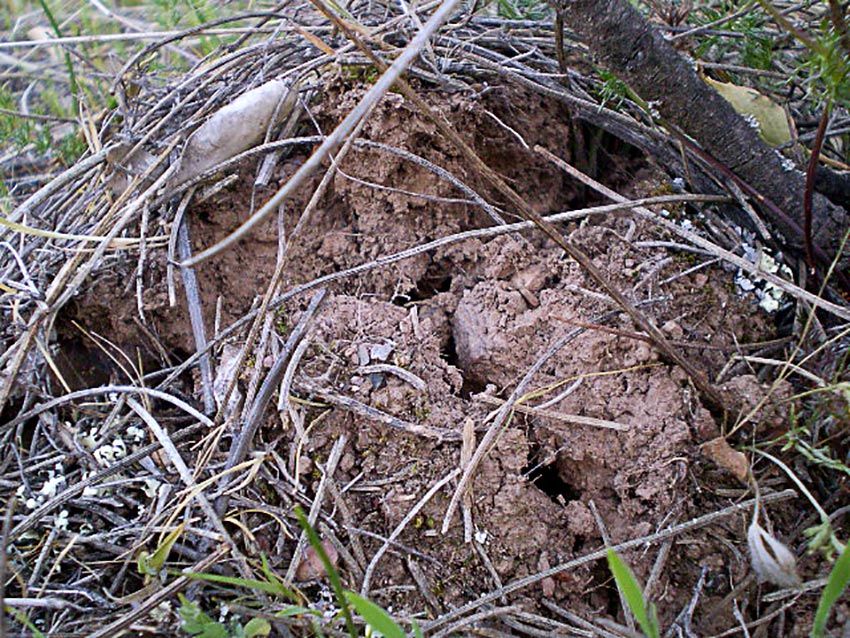
Gurumelo mushroom, Amanita ponderosa, an elusive species reserved for experts
Amanita ponderosa first grows in the form of an egg (volva), buried in the ground. This hypogeous or semi-hypogeous growth makes it very difficult to find for beginners or inexperienced pickers. To locate it, you need to look carefully for small mounds or cracks in the ground, which undoubtedly mark the presence of the precious gurumelos that have already begun to appear.
Where to look for gurumelo mushrooms?
If the climatic conditions are favorable, we can find gurumelos in pure holm oak (Quercus rotundifolia) or cork oak (Quercus suber) woodlands, as it forms a mycorrhizal relationship with these trees. Some gurumelos can also be found in mixed woodlands of these trees and rockroses (Cistus ladanifer), broom (Retama sphaerocarpa), and other species of scrubland. Amanita ponderosa has a strong preference for predominantly acidic soils
They appear in these woods near rockroses and broom, with a preference for bare areas (clearings) with little vegetation.
Mycorrhizal growth
Gurumelos create a symbiosis using mycorrhizae with cork oaks and holm oaks. They also form mycorrhizae with oaks and shrubs such as sticky rockrose. This mycorrhization benefits both parties.
The fine mycelium of the fungi envelops the roots of trees and shrubs, helping them to receive a greater amount of nutrients. In the same way, the mycelium of the fungus also receives nutrients provided by the trees.
This symbiotic collaboration is very fragile. Factors such as excess manure, fertilizer, or pollution can destroy the mycelium and thus the presence of gurumelos. It is up to all of us to ensure that this does not happen.
When should I look for gurumelos?
If weather conditions are favorable, the 2019 gurumelo season will be fairly early. Amanita ponderosa blooms for between 6 and 8 weeks, from late winter to early spring. They really like winter rains. They hatch when temperatures begin to rise at the end of winter.
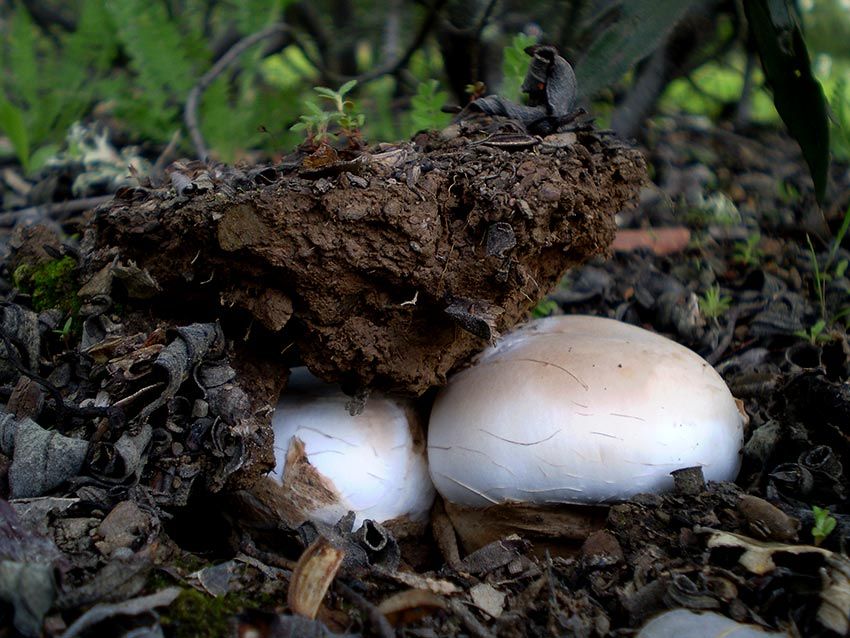
Under favorable climatic conditions, this species can flower for 40 to 70 days, approximately from late January or February to late April or early May.
Autumn and winter rains are very important for this, especially winter rains, which, if generous, favor the appearance of carpophores with the onset of higher temperatures.
If there is no rain in winter, spring rains are insufficient and blooms are rarer and more irregular.
This is a very unusual mushroom, from the time it appears to the way it grows. The gurumelo is the first mushroom of the mycological season to appear, and it is quite a sight to see it break through the soil. It grows underground, taking advantage of the moisture in the soil, and when it decides to grow, no soil can resist it.
Where to find Amanita ponderosa. Gurumelo mushroom hunting areas
If the rains at the beginning of the year, between January and February, have appeared, we can expect to start looking for gurumelos in early March. Although it is not uncommon to see photographs of gurumelos in January!
The first places where they appear are in the province of Huelva, with Aracena being one of the first municipalities to enjoy them. They will then appear further north, in Seville and Badajoz.
Later in Cordoba, in Trassierra, Villaviciosa, Cardeña, and the last to appear are usually the morels of Jaén, in the Vilches area, where they can be harvested almost into May.
As always, conditions prevail and depend greatly on how the rains and temperatures have been in these areas.

How to look for gurumelos, Amanita ponderosa?
Gurumelos tend to grow in groups, sometimes in large numbers. They have very compact flesh and an intense taste and smell of wet earth. This characteristic smell will help us to differentiate them from the dangerous Amanita verna.
As they grow underground and develop, they form cracked mounds in the ground. These mounds are more rounded if we find a good gurumelo nest. To look for these mushrooms among the clearings, we need to pay attention to these cracks.
Harvest gurumelos with special tools
Ideally, harvest gurumelos without breaking them, whole, with the volva and stem intact to facilitate identification. Remember that they are usually found next to very poisonous amanita mushrooms.
In this regard, inexperienced pickers are advised not to pick ponderosa amanita mushrooms when they are still in the egg stage, as they closely resemble other poisonous mushrooms such as the amanita verna at this stage of growth.
In order to extract these mushrooms from the ground without breaking them, we must use a different tool than the usual mushroom knives. For harvesting tricholomas, punches are used, which are planted in the ground to gently lever and extract the mushrooms without damaging them. This type of metal punch must be used because of the hardness of the soil in which they grow
In recent times, gurumelo has become fashionable in the cuisine of many restaurants and is under heavy pressure from pickers, so we will have to be alert to a decrease in their harvest in certain areas.
Beware of confusion between Amanita ponderosa and the deadly Amanita verna
Alongside gurumelos, which grow in the same habitat and at the same time of year, there is also Amanita verna. Be vigilant the first time you go looking for gurumelos and check your finds with someone who knows them well. Confusion could be fatal.
Amanita verna is slightly whiter in color. However, there is a 100% reliable test: oxidation. We need to scrape part of the “gurumelo” with a knife or pocket knife and then rub it. Amanita ponderosa oxidizes and turns pinkish; however, the deadly Amanita verna remains unchanged and does not oxidize or change color.
In this regard, and as we always say at La Casa de las Setas, you must be very careful. Even the slightest mistake can cause the death of one or more people. Therefore, if you have any doubts, do not take any risks and check each mushroom you pick as you clean it.
Gurumelos in the kitchen
This mushroom has great culinary potential and is widely accepted and appreciated in gastronomy. It can be prepared in many ways: grilled, stewed, in an omelet, barbecued with a few grains of salt, or as an accompaniment to other dishes such as rice or meat.
Gurumelo is considered an excellent edible mushroom and in areas where it can be harvested, it is categorized as a true mycological delicacy.
Its main organoleptic characteristic is its intense aroma and earthy taste, with sweet notes. In addition, its dense, firm, and compact texture make this mushroom a delight.
Did you like this post? Share it on your social media: -)
Cheers and gurumelos!

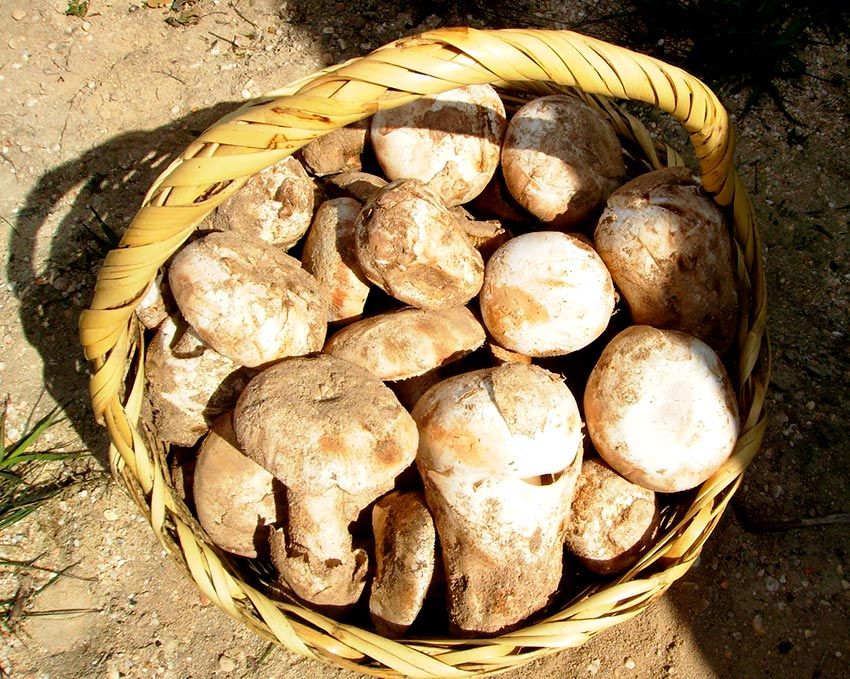
Te pueden interesar